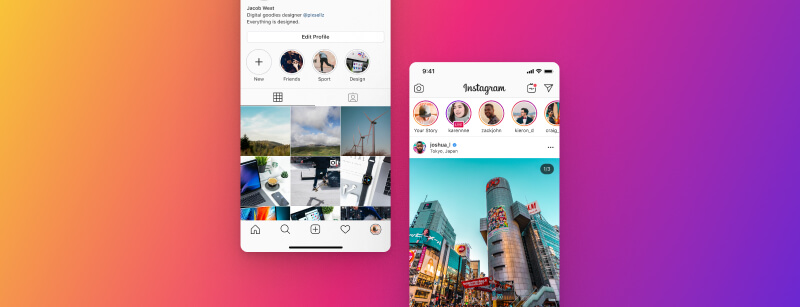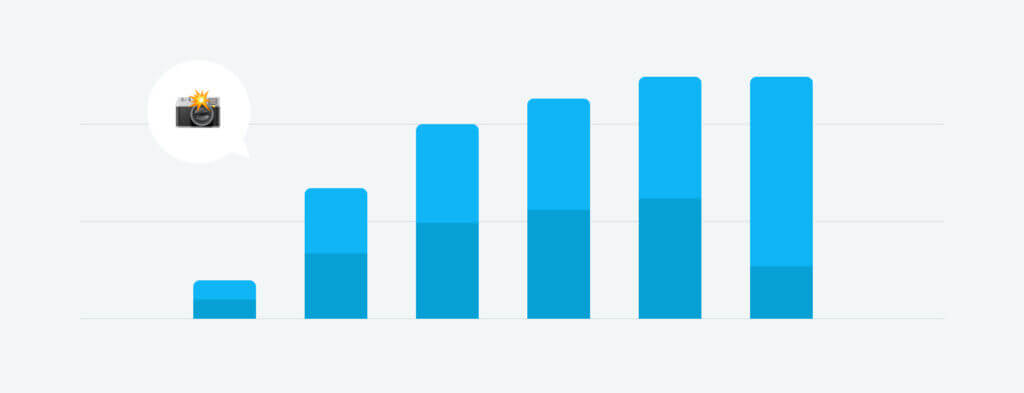
Every year, DMOs are tasked with a tough job: to get more eyes on their destination with a small team and an even tighter budget.
The rise in user-generated content (UGC) is driving a trend for travel marketers to let creators tell the story about their destination. And the UGC statistics for 2024 paint a clear picture that customers want authentic stories. They don’t want to hear it from uber-famous influencers or a multi-million dollar marketing campaign—they want to hear stories and travel tips from real customers.
When we talked to hundreds of DMOs for our Trends 2024 report, there was a clear goal to get these authentic stories in front of their audience. In fact, 98% of respondents—in every budget range—had the same plan: to distribute creator-made content through Instagram ads.
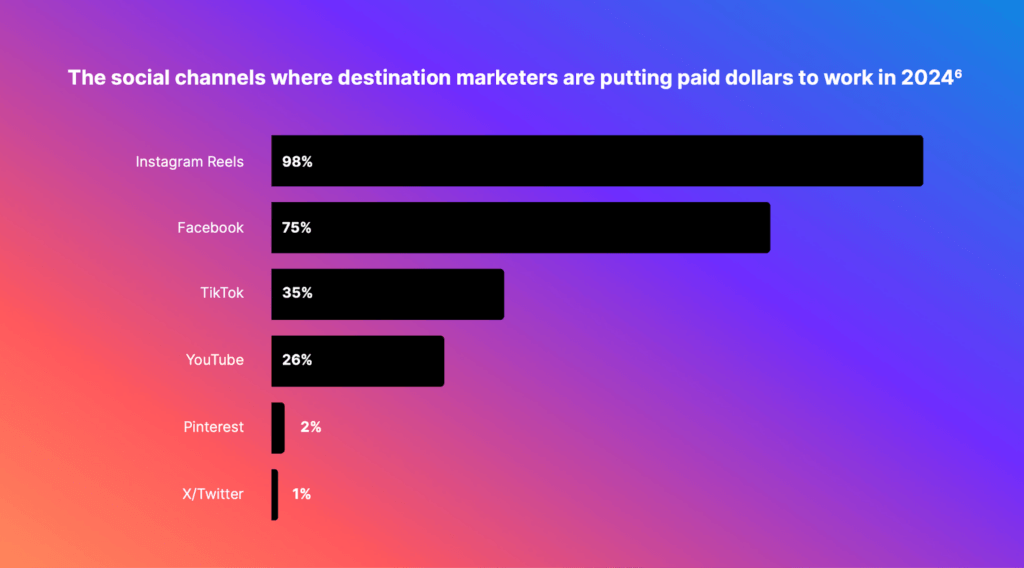
So, how can you pivot your marketing strategy and use UGC to drive your 2024 travel marketing campaign? 🤔
We’ve gathered these important UGC stats to help you understand what’s fuelling the rise in UGC and how to leverage it to drive more tourists to your destination.
Let’s take a look 👇
The Growing Importance of UGC in Marketing
Instead of expensive, slick advertising campaigns or celebrity endorsements, it seems in 2024 we just want to see regular people on our screens. The rise of UGC across social platforms like Instagram, TikTok, and YouTube is giving people exactly what they’ve asked for.
If we dig into the numbers, it’s clear why UGC has become such an important tool in any marketer’s toolkit:
- The global UGC content market is currently worth $5.36 billion, but will grow to $32.6 billion by 2030. (Grand View Research)
- 84% of people are more likely to trust a brand if they use UGC in their marketing campaigns. (EnTribe)
- This trust translates into revenue. According to the same survey, purchasing decisions by 77% of people are influenced if a brand uses UGC. (EnTribe)
- It signals a major shift in the public appetite and what type of content people want to consume. 34% of consumers say ‘too much self-promotion’ is a major turn-off in how they perceive brands on social media. (Hootsuite)
- People now feel UGC is 9.8X more impactful than influencer content. (Nosto)
- They even prefer it over a brand’s own content. A report found UGC is 2.5X more authentic than branded content. (Nosto)
- 55% of consumers across all age groups now trust UGC over other marketing strategies. (UGC for European Tourism Brands – CrowdRiff)
The more we dig into these trends, the more one theme becomes clear—people don’t just love to consume UGC. They start to trust brands that use real people to tell a story… and that trust can pay off and turn them into customers.
The Impact of UGC on Travel Consumer Trust
For millions of travelers, trust is everything when they plan and travel to a destination.
When TravelPort asked 10,000 people across multiple countries what was important to them when planning a trip, 46% said they prioritized trust over everything else when choosing a travel provider. However, only 46% of the group said they trusted the travel industry, and this dropped with age, with just 38% of Gen Z tourists admitting they trust the travel industry.
One reason sticks out—a shocking 70% of travelers have had their trust broken by a travel business in the past. For DMOs, UGC is a chance to win them back:
- 92% of consumers trust word of mouth and UGC more than other forms of traditional brand advertising. (The Ultimate Guide to UGC for Travel and Tourism Brands, CrowdRiff)
- 85% of consumers find UGC more influential than brand photos or product videos. (The Essential Guide to User-Generated Content for Attractions, CrowdRiff)
- 86% of brands think using authentic UGC in paid and owned media would improve the performance of ads and content. (Bazaarvoice)
- 84% of millennials report that user-generated content has some influence on what they buy. (The Essential Guide to User-Generated Content for Attractions, CrowdRiff)
- Using UGC can also help DMOs build trust. Nearly two-in-three (65%) people between the ages of 18-44 would be more loyal to a brand if they requested and used their content in marketing campaigns. (EnTribe)
With statistics like these, it shouldn’t be a surprise to a single travel marketer on the planet why UGC can be a force to drive potential visitors to their destination.
However, most marketing professionals (61%) say they don’t have a big enough budget to pay for the content strategy they need. This means a lot of DMOs need to find a creative way to make their marketing budgets stretch. UGC may just be that answer in 2024.
UGC Engagement Rates in the Travel Industry
UGC is more than just sharing funny clips or recipes in each other’s DMs. It’s also where we get the best inspo for our next trip. Travelers want to get a peep at what other travelers are doing. What they’re eating. What attractions they’re visiting. What they loved. What they hated. They want to see it alllll.
We talked to over 200 destination marketers for our 2024 Trends Report to get an insight into their content marketing strategies, there was one constant theme—how they planned to leverage UGC:
- Instagram is still the preferred social network for internet users aged 16-34. (Instagram)
- 77% of travelers now use social media platforms in the early stages of trip planning. (Expedia)
- In fact, 40% of US travelers over 30 have used TikTok rather than Google to research a trip. (MMGY Global)
- Most DMOs are going where their target markets are. 91% of CrowdRiff customers are active on Instagram and almost 50% of these customers post daily.
- 81% of the destination marketers we surveyed have seen higher engagement on social media platforms since using UGC. (CrowdRiff 2024 Trends Report)
- Over 50% of people say the biggest influencers on where we travel is still friends and family. (Expedia)
- Marketers can capitalize on this because people love consuming UGC—but they also love to share content. 73% of millennials post something every day while traveling. (UGC for Tourism Brands – CrowdRiff)
- 52% of Facebook users say their friends’ travel photos inspire their travel plans. (UGC for Tourism Brands – CrowdRiff)
- Millennials are already using UGC to help plan their next vacation. (UGC for Tourism Brands – CrowdRiff)
- 90% of DMOs we surveyed think influencer marketing will continue to be big in 2024, but expect to see a shift towards micro-content creators and subtle marketing tactics. (CrowdRiff 2024 Trends Report)
But does all this buzz and increased trust translate to more visitors? 🤔
UGC Conversion Rates for Travel Brands
The days of polished travel marketing campaigns seem to be over (for now). Instead, content that’s thriving online is produced by micro-content creators or everyday travelers documenting their trips. And it’s thriving for one reason—it’s authentic content.
“The growing demand for relatable content underscores the importance of building genuine connections with engaged niche audiences through user-generated content, passive marketing tactics, and micro-influencers.”
*CrowdRiff: The State of Social Media
The good news for DMOs is this authenticity is translating into paying travelers:
- UGC on socials is so effective that 32-39% of millennials won’t book a hotel or travel experience from a brand that doesn’t use it in its digital marketing. (The Ultimate Guide to UGC for Travel and Tourism Brands, CrowdRiff)
- Brands that feature UGC on their website can increase time-on-site by up to 90%. (The Ultimate Guide to UGC for Travel and Tourism Brands, CrowdRiff)
- UGC can also pay off when it’s used in unexpected places like outdoor advertising—billboards are remembered by 71% of drivers who pass them.
However, there are some obvious laggers to the UGC trend. In our State of Visuals in Hospitality Marketing Today report, only a quarter of resort and hotel ads were using UGC. A surprising 77% still relied on professional content for Meta ads, and 71% of resorts and hotels didn’t have any UGC galleries on their website.
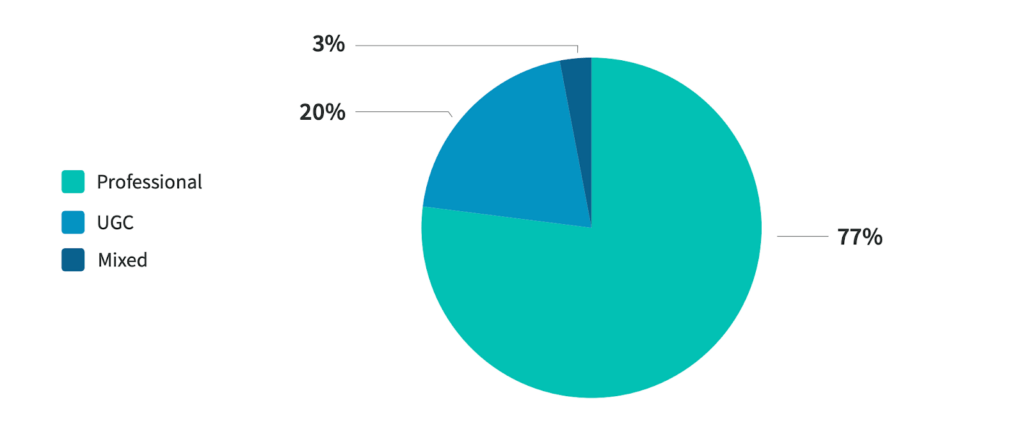
The mix of images used by resorts and hotels. State of Visuals in Hospitality Marketing Today report
It’s worth noting how expensive this lack of pivot to UGC is for resorts and hotels. 82% still source the majority of their visual content through a professional photographer or pay for stock photographs.
The Rise of User-Generated Video Content
Channels like Instagram Reels, TikTok, and YouTube Shorts are leading the UGC charge in 2024. And these channels all have one thing in common—video is the main form of content 📽️
- The majority of destination marketers agree short-form video is the most important strategy of 2024. (CrowdRiff 2024 Trends Report)
- It’s not just us saying it. 56% of marketers reported to HubSpot that short-form video was their top investment for 2024. (HubSpot State of Marketing Report 2024)
- Destination marketers will prioritize short-form video across Instagram Reels, TikTok, and YouTube Shorts this year. (CrowdRiff 2024 Trends Report)
- 98% of DMOs will pay to distribute creator content through Instagram ads. (CrowdRiff 2024 Trends Report)
- 91% of active users watch Instagram videos every week. (CrowdRiff 2024 Trends Report)
- 49% of Gen Z’ers use Instagram Stories to find new products and services. (CrowdRiff 2024 Trends Report)
- 78% of DMOs are prioritizing content on Instagram Reels for 2024. (CrowdRiff 2024 Trends Report)
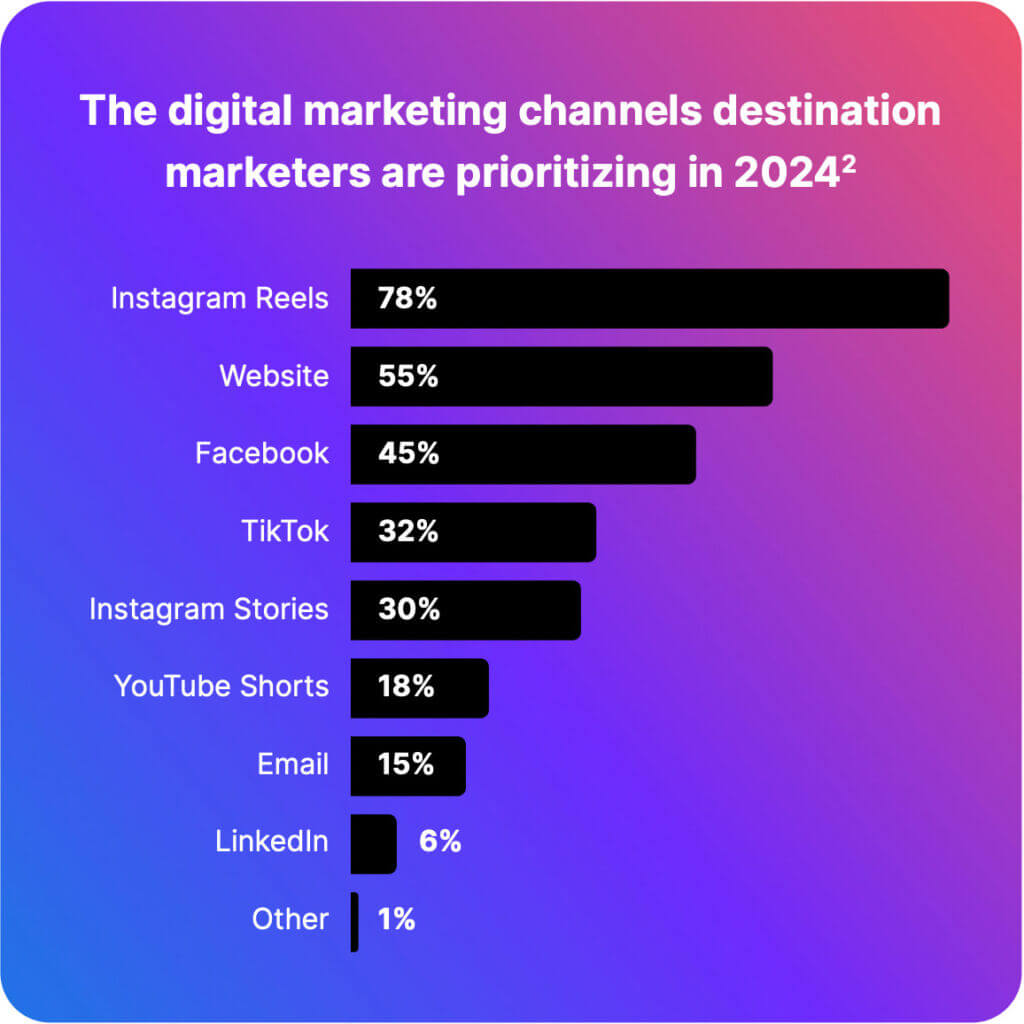
- Other channels like YouTube Shorts are slowly catching Instagram Reels in the popularity race. The platform is now watched by over 2 billion users each month. (YouTube)
- Reels seem to be living up to the prediction it would become “the future of Instagram’s feed”, with roughly 20% of all watch time now being spent on the feature. (Business Insider)
UGC and Its Role in Travel Marketing and Social Media Strategies
Sourced content plays such a big role for some DMOs that the UGC strategy is the whole strategy.
DMOs like MyHelsinki now use 100% UGC content on its website to draw in visitors—a swift departure from its previous more traditional travel marketing strategy. The reason behind the change was simple: the DMOs strategy was to give people a local guide to Helsinki, so it used content compiled by locals to do just that.

“Personal recommendations are overwhelmingly effective marketing tools in the social media environment. Everyone is free to be part of the city as they are, with no filter, to proudly carry their own values and experiences. Helsinki has turned its people into activists who open restaurants in their living room and invite strangers to their sauna.”
- Tia Hallanoro, the Director of Brand Communications & Digital Director at Helsinki Marketing
Are other DMOs following suit? 🤔
Although 67% of destination marketers are focused on social media engagement metrics as KPIs this year, some are still not taking full advantage of UGC trends. We recently dug into more than 850 CrowdRiff customer social media accounts and found:
- Only 42% have a TikTok account
- Of those who are active, about 35% are posting at least once a week
- Just 6% post to TikTok daily 🤯
If lack of content creation is the reason, UGC can help DMOs fill the gaps. Remember people love to share content online, and they are (usually) happy to give you UGC rights to use their photo—CrowdRiff customers usually see 60-70% approval rates! 👀



